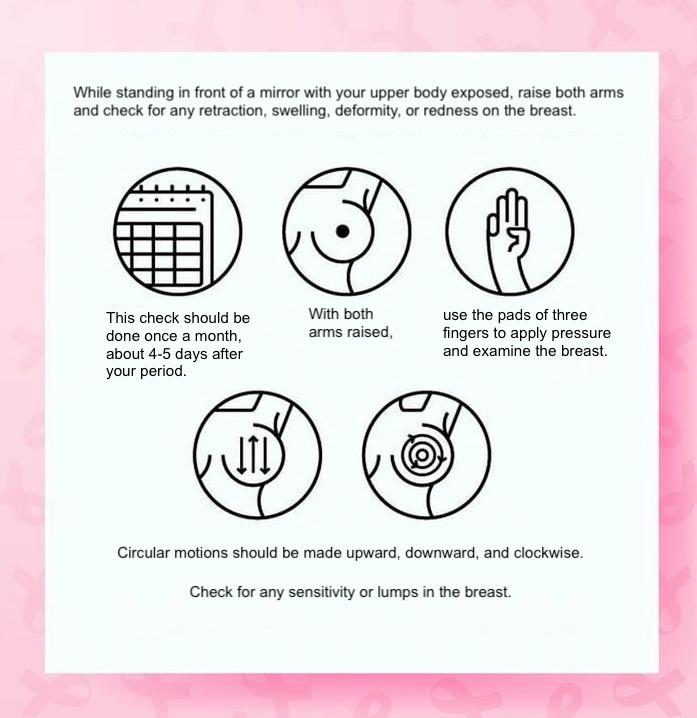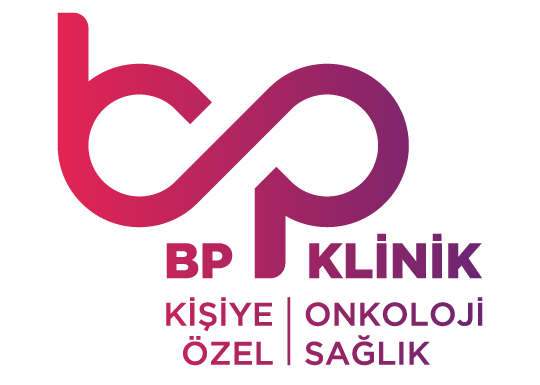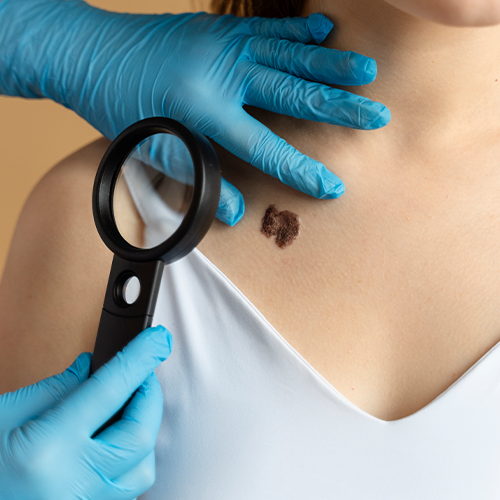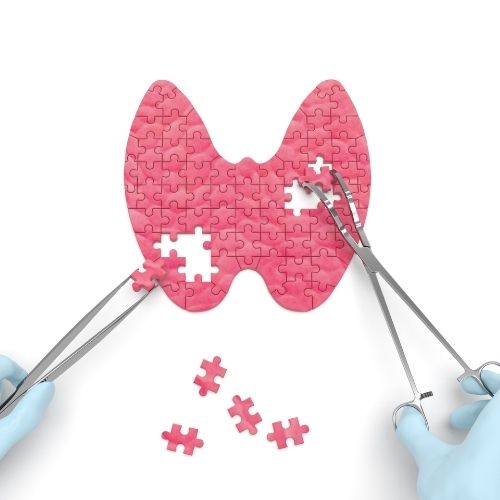Does Breast Cancer Kill? What are The Symptoms and The Treatment Methods?
What is Breast Cancer?
Breast cancer is a disease that occurs due to the change and uncontrolled proliferation of cell groups that function in the breast tissue. Tumor formation is seen in this disease, as in many types of cancer. Cancerous cells can first spread to the immediate environment and then to the lymph nodes close to the breast. In patients who cannot be diagnosed and treated on time, cancerous cells spread to different organs, making treatment difficult. The spread of cancerous cells to different organs is called metastasis.
Causes of Breast Cancer
Only 15-20% of breast cancers are hereditary, that is, run in families. If a person’s mother, aunts or sisters have breast cancer, they are more likely to have breast cancer. However, this does not mean that the person will eventually develop breast cancer, it can be said that the person has a tendency. A regular and healthy life can prevent or delay the breast cancer, even if there is a hereditary risk.
Breast cancer is a disease that is more likely to occur with age; The risk increases with age. In parallel with the prolongation of the average human lifespan, we can say that we now observe more cancer cases around us. In addition, we are able to diagnose cancer more often than before. Before, people were dying, but we couldn’t determine why. All these create the perception that people are getting cancer more. However, it would not be wrong to say that changes in our lifestyle are pushing us to cancer more. A sedentary lifestyle, not to be on a balanced and regular diet, on the contrary, to be on a diet rich in carbohydrates and animal protein are the most important reasons why we do not have cancer.
Other reasons can be listed as follows:
What Are the Risks of Breast Cancer?
- Gender being female
- Being in the age range of 50-70 years and in the post-menopausal period
- Having relatives with breast cancer in the family
- Having had breast cancer before
- Early menstruation, late menopause
- To have never given birth
- Having the first birth after the age of 30
- Having given birth but not breastfed the baby
- Taking long-term hormone therapy
- Living in a modern city life environment
- Using cigarettes and tobacco products
- Obesity; gaining excess weight, especially after menopause, and consuming foods rich in saturated fats
- Lack of regular sports life
Types of Breast Cancer
As in every disease, there are various types of the disease in breast cancer. Breast cancer is basically divided into two main groups. This distinction is made according to whether the cancer has spread or not. The first of these basic groups is noninvasive, that is, in situ and the other group is invasive, that is, has the potential to spread.
Until the beginning of the 2000s, breast cancer was roughly classified into two different groups as estrogen-sensitive and insensitive. Today, this classification has changed and it has been determined that breast cancer is in 4 main types according to the receptors, that is, their biological properties that cancer cells carry on their surfaces or not.
- Luminal Type A: Estrogen hormone sensitive tumors (ER positive)
- Luminal Type B: Tumors partially sensitive to estrogen hormone and/or Her2 receptor (Her2 positive)
- Her2 Positive: Tumors having the estrogen insensitive Her2 receptor
- Triple Negative (Basal Type): Tumors lacking estrogen hormone and Her2 receptor
What Are the Symptoms of Breast Cancer?
It takes a long time until a cancerous cell in the breast grows and forms a mass, and a specialist notices it during the examination or becomes evident after radiological examinations. In general, the tumor must have reached a size of at least one centimeter in order for women to understand the mass by means of manual control. Today, with the increase in awareness studies, most individuals can realize the symptoms of breast cancer on their own. Masses with cancerous cells appear a little harder than normal, with irregular edges and a rough surface. In addition, these cancerous masses cannot be moved easily within the breast tissue. The symptoms of breast cancer are listed below.
- A hardness or mass in the breast that can be felt
- Asymmetry between the two breasts recently recognizable
- Inward retraction of the nipple or breast skin
- Redness, wound, eczema, crusting, cracking in the breast
- Orange peel-like appearance on breast skin
- Change in shape or direction of the nipple
- Unusual breast swelling or increase in breast size
- A different kind of pain in the breast during menstrual periods
- Nipple discharge; especially in pink and red
- Lump or mass in the armpit

How Is Breast Cancer Diagnosed? What are the Diagnostic Methods?
After you and your family’s medical records are observed, a physical examination is performed. Then some imaging methods are applied. Ultrasound and mammography are among these methods. They are the first imaging methods used in the presence of a suspicious lesion or in routine imaging. Magnetic resonance imaging is another most commonly used imaging method, especially under the age of 40. With ductoscopy, milk ducts can be examined by advancing with fiberoptic systems at the starting point of the canal at the nipple, or a contrast component can be given from the nipple with ductography (galactography), but these examinations are used much less frequently. As in many types of cancer, early diagnosis and imaging are very important in breast cancer.
Scanning
| AGE GROUP | METHOD | APPLICATION FREQUENCY |
| 20-39 years old women | BSE
Clinical examination Mammography |
Every month
Every 2 years |
| 40-49 years old women | BSE
Clinical examination Mammography |
Every month
Every year Every 2 years |
| Women aged 50 and older | BSE
Clinical examination Mammography |
Every month
Every year Every year |
After the age of 20, every woman should do a breast self-exam once a month. It is recommended that a doctor’s examination be done every two years until the age of 40, and every year after the age of 40. Although mammography is recommended for every woman after the age of 40 in our country, if there is no family history of breast cancer or if she does not have a risk factor, mammography can be done at a later age. Mammography is never an adequate imaging technique on its own. It is absolutely necessary to perform ultrasonography and doctor examination together. It should also be noted that axillary lymph nodes cannot be evaluated with mammography. In the presence of a suspicious lesion in women or men under 40 years of age, magnetic resonance imaging is the preferred imaging method over mammography.
Breast Cancer in Man
Men have breast tissue, but very small, and breast cancer can be seen, although much less frequently than women. The most common symptom is the mass in the breast, as in women, it may be seen with discharge, bleeding, withdrawal, deformities, and palpable swelling in the armpit.
Breast Cancer in Man The growth of breast tissue called gynecomastia should not be confused with breast cancer. Gynecomastia may develop depending on the drugs used, genetic structure and weight gain, but when gynecomastia develops, it should be ensured whether there is a cancer. It is easy to diagnose because there is little breast tissue, but it can spread more quickly due to less breast tissue. In general, breast cancer progresses faster in men than in women.
After the age of forty, men should also perform a manual breast examination once a month and you should consult a doctor immediately in case of doubt. Likewise, if there is a family history of male breast cancer, they should undergo regular doctor control.
The treatment also consists of surgical chemotherapy, radiotherapy and targeted agents according to the stage of the tumor, its biological characteristics and the patient’s condition. However, in general, the first treatment is surgery. Chemotherapy, hormone therapy or one or more of the targeted drugs are administered according to the morphological and biological characteristics of the tumor stated in the post-surgical pathology report. After surgery and chemotherapy, radiotherapy can also be administered depending on the characteristics of the tumor and whether it goes to the axillary lymph nodes.
Does Breast Cancer Kill?
The World Health Organization states that the most common type of cancer is breast cancer. This is the bad news about breast cancer. Good news; Breast cancer is now curable on a large scale, but before it could be cured, it was preventable.
Regular, healthy diet and exercise protect against breast cancer as well as all cancers. If we cannot prevent breast cancer, early diagnosis is the most important issue. A breast cancer diagnosed at an early stage can be treated with breast-conserving surgery and radiotherapy. With very low-risk patients, the combined use of cryotherapy and radiotherapy may be an option in recent years, but it should be noted that it can be given to patients with really low risk factors. We can now say that breast cancer can turn into a chronic disease in the locally advanced or metastatic stage, thanks to newly developed targeted drugs and immunotherapy, and that we can at least prolong life even in cases where we cannot completely recover from the disease. In short, breast cancer is a chronic disease, breast cancer does not equal death.
Breast Cancer Treatment Methods
The chance of success in treatment is directly proportionate to early diagnosis of cancer. When the right treatment methods are applied in cancer diagnosed at an early stage, the survival rate increases. Surgery is the most important technique used in the treatment of breast cancer. The purpose of this surgical treatment is to get the mass out of the body. Methods other than surgical treatment can be used to prevent the recurrence of the tumor and to stop its spread to other organs.
Radiotherapy
Radiotherapy is an indispensable part of the treatment in breast cancer. After the operation, it is aimed to kill cancerous cells that may remain after surgery with radiotherapy to the breast and armpit region in locally advanced disease. While post-surgical radiotherapy is given to almost every patient undergoing breast-conserving surgery, high-risk patients are also treated with radiotherapy after “mastectomy” surgery, in which the entire breast is removed.
The purpose of radiotherapy is to provide appropriate dose distribution in the irradiated region, while causing minimal damage to the surrounding normal tissue. We do this with new radiotherapy techniques, which we call 3D conformal radiotherapy, intensity modulated radiotherapy or arc therapy. However, despite all technological advances, it should not be forgotten that normal tissues such as the lung, heart, esophagus, and contralateral breast receive a certain dose.
Breast Cancer Radiotherapy Is Possible by Protecting the Heart!
Most of the time, the treatment is given despite certain side effects and risks. Lung and heart are among the organs most frequently affected. However, it is possible to minimize this risk when we give radiotherapy with respiratory-controlled techniques.
What do we want to control when we administer respitory-controlled techniques?
In addition to irradiating our target volume correctly, we try to reduce the dose received by the heart and lungs. In this technique, the lungs are inflated by holding the breath, and the lung tissue entering the radiotherapy region decreases, and the heart is also excluded from the region .
Breath holding is one of the most used techniques. It is possible to summarize other techniques used to reduce the effect of respiratory movement as follows:
- Methods involving movement
- Respiratory monitoring methods
- Breath-holding techniques
- Deep breathing techniques
- Techniques synchronized with breathing
It has been reported that respiratory-controlled radiotherapy reduces the cardiac mortality rate by 4.7%.
Is it possible to give radiotherapy without surgery?
Depending on the developments in Interventional Radiology in recent years, radiotherapy can be given to the entire breast and lymphatic region after local procedures such as cryotherapy in patients who refuse to have surgery. However, it should be known that this treatment should be given only in selected patients, and that radiotherapy cannot replace surgery in high-risk patients.
Note: For more detailed information about the method of Radiotherapy in Breast Cancer, you can also review our article titled Radiotherapy in Breast Cancer.
Chemotherapy
The purposes of using chemotherapy in breast cancer can be listed as to shrink the tumor before the operation (neoadjuvant), to minimize the risk of recurrence of the tumor after the operation (adjuvant), or to increase the quality of life in advanced disease (metastasize). The chemotherapy protocol is usually two or three drugs given with specific instructions. It is a more accurate treatment approach to give for gene tests in order to evaluate the benefit of chemotherapy at early-stage breast cancer or to find the appropriate treatment for the mutation of the tumor in the metastatic stage.
Smart Drugs
Such drugs are used for HER2, which is the receptor for the growth stimulus in breast cancer cells. Only chemotherapy or hormonal treatments may not be effective enough in patients in this group. Smart drugs such as Perjeta, Tykerb, Herceptin, which are produced and developed to prevent the aforementioned algae, increase the effectiveness of the treatment applied.
Hormonal Therapy
The purpose of hormone therapy is to prevent the increase and development of cancerous cells by reducing the effect of estrogen in cancer types that are sensitive to estrogen and progesterone hormones. Hormonal therapies are as effective as smart drugs and chemotherapy in cancer patients. Approximately 70% of patients are hormone receptor positive. In these people, hormonal therapy can be given according to the condition of the individuals. In Luminal A and B types included in the hormonal therapies’ classification, estrogen and progesterone hormone receptors can be applied in positive types.
Mastectomy
It is the operation of removing the breast completely with cancerous cells. A new breast can be made with the patient’s own tissues or a silicone prosthesis.
Skin-sparing Mastectomy
Similar to mastectomy, breast tissue is removed, but breast skin is preserved. The prosthesis is placed instead of the removal tissue and a more aesthetic appearance is provided. Specialists can do this for risk-reducing breast cancer operations.
Breast Conservation Surgery
It is an operation in which the mass is removed with some normal breast tissue around it. This operation has two purposes. First, the breast is left in place and there is no aesthetic deterioration. Secondly, the purpose is to ensure that the mental and physical psychology of the patient is minimally affected. After these surgeries, a radiotherapy session lasting approximately 1-2 months can be given.
In recent years, great progress has been made in the treatment of breast cancer diagnosed at an early stage. According to statistics, it was revealed that the survival rates of patients who underwent breast conserving surgery and patients who underwent mastectomy were close to each other. Today, except for some medical conditions, it is not necessary to completely remove the breast in breast cancer surgeries. This ensures that the mental health of the patients is minimally affected. If the breast needs to be removed completely, surgeons can create natural-looking breasts instead.
Metastatic Breast Cancer
In today’s science and technology, cancers are now treated according to the genetic mutations they carry. The use of drugs for mutations detected by gene tests enables more targeted, more precise treatments. Thus, we increase our treatment success and give our patients a chance to survive even in the metastatic stage.
Frequently Asked Questions About Breast Cancer
Is Inflammation in the Breast a Sign of Cancer?
Inflammation and infection of the breast may manifest as tenderness, redness and increased temperature. In this case, the first thing to do is to start antibiotic therapy. In cases that do not respond to antibiotics, the possibility of inflammatory breast cancer should be investigated immediately. In inflammatory breast cancer, which has a very aggressive course, treatment should be started without delay.
Does Breast Cancer Occur Only in Those Who Have a Family with Breast Cancer?
Only 10-15% of breast cancers are seen in those who have a familial, that is, first-degree relative with breast cancer, and approximately 10% are seen in those who carry cancer genes such as BRCA 1,2. 75% of breast cancers occur due to other factors. Being a woman and advanced age are the most important risk factors for breast cancer.
Is Every Palpable Mass in the Breast Cancer?
Most of the palpable masses in the breast are the breast tissue or benign structures called fibroadenomas or fibrocystics. Fibroadenomas and fibrocystics do not have a risk of transformation into cancer. However, they can cause pain in the breast or cause breast enlargement and tension.
Is a Cancer-related Mass in the Breast Always Painless?
Most cancer-related masses are painless, but the presence of pain does not mean that it is not cancer, it must be evaluated by a doctor.
Is It Necessary to Remove Both Breasts?
Removal of both breasts is only recommended for high-risk patients. Having cancer in one breast does not require being in the high-risk group. There is no difference in survival and recurrence risk between breast-conserving surgery followed by radiotherapy and removal of the entire breast in these patients. However, the patient’s feeling is more important than anything else, if the person feels more comfortable and safer, both breasts may be removed, or vice versa, although it should be removed, it may not be removed at the request of the patient.
Do Men Have Breast Cancer?
Men have breast tissue, but very small, and breast cancer can be seen, although much less frequently than women. The most common symptom is the mass in the breast, as in women, it may be seen with discharge, bleeding, withdrawal, deformities, and palpable swelling in the armpit.
Does Pregnancy Increase Breast Cancer Risk?
Pregnancy does not increase the risk of breast cancer, on the contrary, it decreases it. However, due to physiological changes in the breast during pregnancy, the diagnosis of cancer may be difficult.
Do Plastic Operations Increase the Risk of Breast Cancer?
In recent years, there is a belief that the silicones used in breast augmentation operations cause cancer, but no data has been obtained that these silicones cause cancer in the studies.
Does Mammography Cause Cancer?
There is a belief that mammography itself causes cancer due to the radiation it emits. In fact, the radiation emitted with mammography was more in the years when the technology was not developed. It has been reported in the publications that mammograms cause cancer, but in today’s technology, the radiation to be received from a mammogram is not more than the radiation received from natural sources in a few weeks. Considering the benefit, it will provide in detecting cancer early, we should not avoid mammography when the time comes or when necessary.








